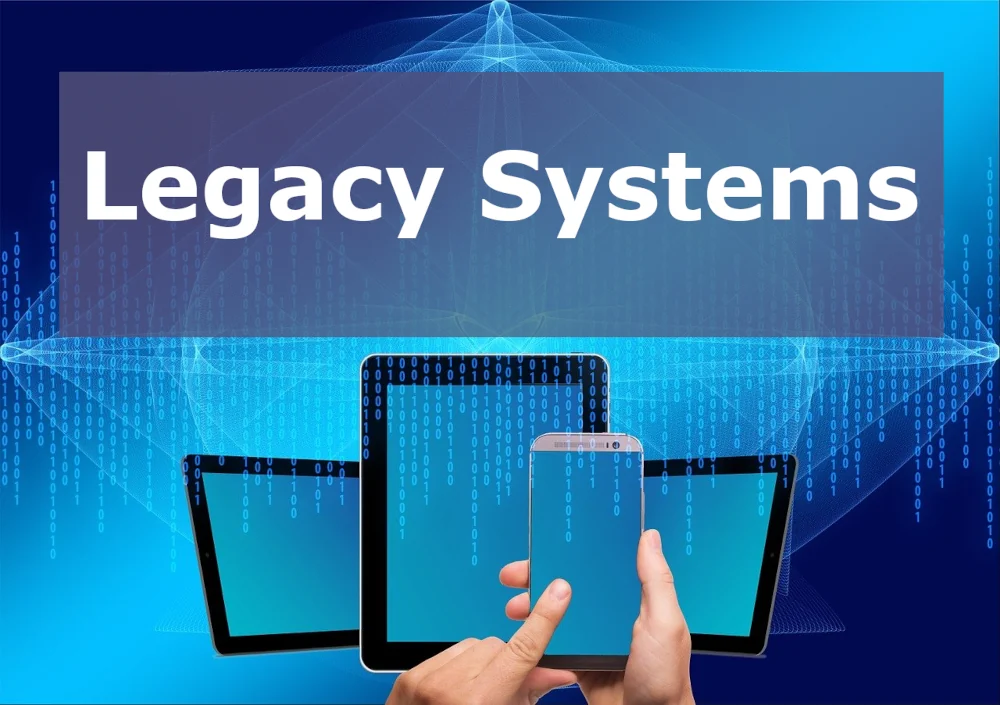Many enterprises still rely extensively on aging software systems built years back. While these longstanding platforms remain operationally core, their increasingly outdated and restrictive architectures now struggle to address rising user expectations and emerging business support requirements driven by digital transformation.
Defining Legacy Systems
A legacy system is any out-of-date computer system, piece of hardware, or piece of software that is still in operation. Programming languages, file formats, computer hardware, and software are examples of legacy systems.
These longstanding systems exhibit one or more constraints:
- Outdated Code – Built on obsolete languages lacking support and vulnerable to issues.
- Expensive Maintenance – Require rare niche skills to charge premiums sustaining outdated stacks.
- Poor UX – Clunky user interfaces frustrate digital native employees and customers.
- Tight Coupling – Monolithic architectures hinder modifying programs, hampering responses to needs.
- Compliance Gaps – Inability to capture emerging data types like mobile and social data for analytics.
- Integration Inability – Closed ecosystems prevent embracing newer best-of-breed SaaS solutions.
- Limited Scalability – Static on-premise installations are unable to handle usage spikes.
While fortified in critical operational processes, legacy systems stall organizations as needs outpace capabilities. Selectively modernizing with the help of legacy application modernization services alleviates constraints.

A Phased 4-Step Modernization Process

Strategically transitioning systems over multiple cycles allows for balancing business realities and progress. We outline key stages:
Step 1 – Audit and Set Vision
Thorough audits uncover capability and budgetary starting points across people, processes and technology by:
- Cataloguing existing solutions with external touchpoints
- User interviews identifying pain points
- Resource and roadmap analyses
This extensive analysis clarifies genuine functionality and experience gaps that warrant attention based on their severity and the feasibility of addressing them in both financial and human resource terms. These insights combined inform strategy planning covering years, considering the appetite for change.
Step 2: Prioritize Quick Wins
Tackling some visual improvements fast without intensive effort pays user dividends, while larger modernization takes shape behind the scenes. Efforts like accessibility and mobile fixes provide needed system responsiveness quickly during the transition period. Capturing usage analytics aids insights that can guide further changes. Documenting existing convoluted workflows also eases new employee onboarding.
The key is choosing intentionally based on direct pain relief potential, not theoretical appeal or speculative eventual value. Demonstrate improvements through realistic examples early.
Step 3: Assess Migration Roadmaps
Model multi-quarter transition options assessing elements like:
- Viable target technology and cloud deployment strategies
- Business process change implications
- Retraining and cultural readiness factors
- Security and integration testing needs
- Cost-benefit tradeoffs
About half of the companies have significant technical debt or high total cost of ownership (TCO) for vital applications. Thoroughly estimating TCO helps secure leadership support for programs that balance practical change appetite, available budgets, and strategic priorities while realistically outlining genuine risks upfront. Cross-department representation ensures holistic visibility.
Step 4: Iteratively Modernize and Refine
Finally, progress-approved initiatives are steadily approved through intentional iterations to ensure quality. Articulate detailed minimum viable scope meetings key objectives, then demonstrate capability improvements through working software, not just plans. Rigorously test each update, managing regressions. Actively solicit user feedback to fix adoption barriers.
Refine in small batches before major commits to decommission legacy elements, allowing rollback if outcomes diverge from intent. Careful orchestration of technology, people and process interdependencies is key throughout modernization programs spanning years, not just quarters.
Realizing Continuous Improvement
With meticulous steps upholding standards, legacy modernization sustains robust systems into the future, leveraging institutional knowledge while advancing capabilities. Though inexpensive wholesale transitions seem attractive, they discount painful learning curves and culture receptors. Deliberate upgrades balance progress and continuity for user outcomes and internal adoption.
Technical debt is gradually relieved through componentization, freeing resources for innovation and maintaining reliable operations in increasingly competitive digital landscapes.


